by Abraham Lopez
First, we had chants, then choirs, opera, blues, jazz, rock and roll. Although, there was no one to record it. With time we had the phonograph, then the vinyl records and LPs, and the biggest star of them all, radio. Radio was everywhere but it wasn’t good enough, then a shooting star hits the earth, and so television came into the world. Video was becoming more popular as the years went by; but what if we combined music with television? Could this be goodbye to the radio star?
Short answer, partially, but not anymore. Internet killed the MTV star.
I don’t really watch MTV. In fact I never planned to watch it, only when it happens to be on at the local barber shop. I’m almost 20 years younger than it so, yeah there’s also that. I’m very much aware of its past and appreciate it. Plus it’s a dried out empty well of water than what it used to be.
MTV: Music Television has made an impact on the music industry like none other before. Just like the name says, “Music Television”, music videos 24/7 in stereo sound, and then some other programs. Sure we had music videos available to the public already but those were seen in some music shops or sometimes as a special on some other network. Even music chart list programs that came on once a week for just 30 to 60 minutes. You’d be surprise the network wasn’t available much sooner, hell it could’ve been 15 years sooner, but it just seemed like the idea was thought thouroughly yet. The network started off pretty strong, of course with its ups and downs early in its history, evolving to include more original programs for adult audiences also still with some music still involved like the Video Music Awards, Music Awards, and Movie & TV Awards. Although I still wonder why they have those when they got nothing to do with music a lot now. Why do they bother to keep the “Music” still in the name? Call it ‘RTV-Reality Television’ or something instead. I mean what would you call it?
Let’s get back to the juice on hand here. The concept of MTV went as far back as 1964 with the popularity of music videos growing very slowly with The Beatles’ release of (of course it didn’t skyrocket to the atmosphere until the MV for Queen’s Bohemian Rhapsody). Other inspiration came from the UK Music Chart show, Top of the Pops, Australia’s Countdown, and a very short lasted program from Atlanta called The Now Explosion. In 1974, the first name idea Music Video TV came into mind from Gary Van Hass of Televak Corporation. Originally that channel was to be sold only to music stores across the U.S., though the idea behind that didn’t fully go into execution. The idea eventually got its footing in 1979 properly by being placed on a channel spot on the Waner-Amex Satellite Entertainment local cable service, QUBE, as Sight on Sound. A similar show style was also put on Channel C-3 on QUBE (C-3 was the station for Pinwheel which eventually becomes Nickelodeon, in which MTV Networks obtains).
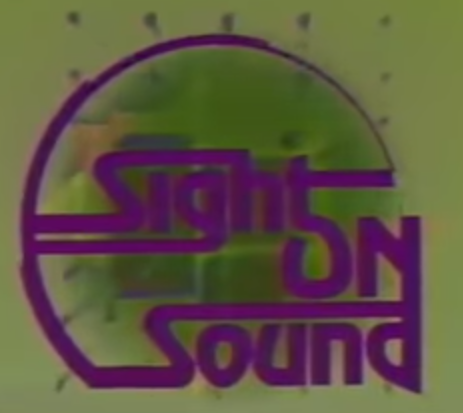
Eventually it made its residence on public cable television with the help of 25 year old Robbert W. Pittman, who created the original programming style for MTV in the late 1970s and eventually became the CEO of MTV Networks. In that time, their first test 15 minute program was called Album Tracks, airing on WNBC-TV Channel 4 in New York City. Slowly but surely things finally got in their grasp at Warner-Amex Satellite, because in 1980 after the making of the MTV trademark with the byline The Music Channel, which had a very drastically different logo compared to what we know and love. It looked like this.

An alternate version showing the hand holding the note and much bigger.
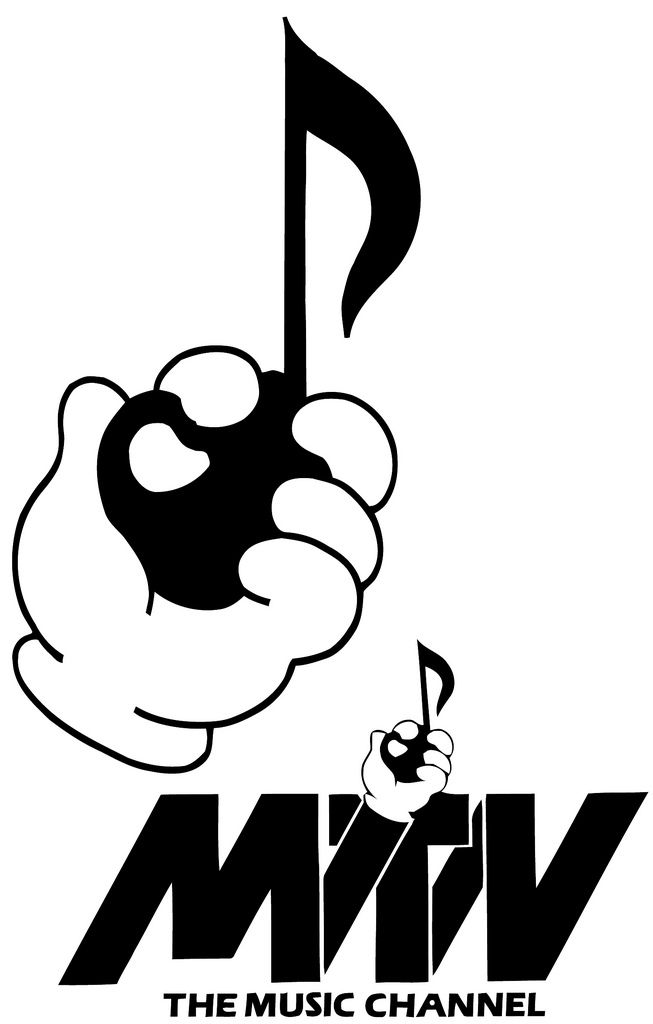
In fact, there were alot more concept designs that went into the making the final logo, something I always love to see.
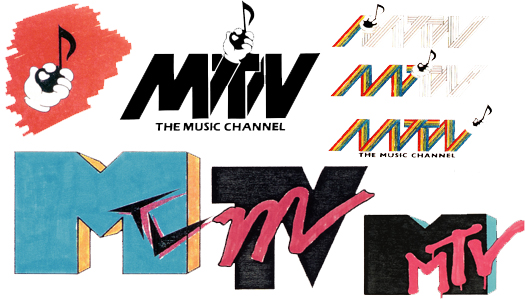
Finally, the date, August 1, 1981 at 12:01 AM, the launch was a go for MTV. “Ladies and gentlemen, rock and roll.” The channel made it through the stars and now on the moon. From this moment on the music and entertainment industry have been revolutionized forever. 24 hours a day, 7 days a week, hosted by the MTV “VJ’s” or Video Jockeys”, in stereo sound, and of course those moonmen with that oh so fancy flashy flag, you wouldn’t see music the same way again.
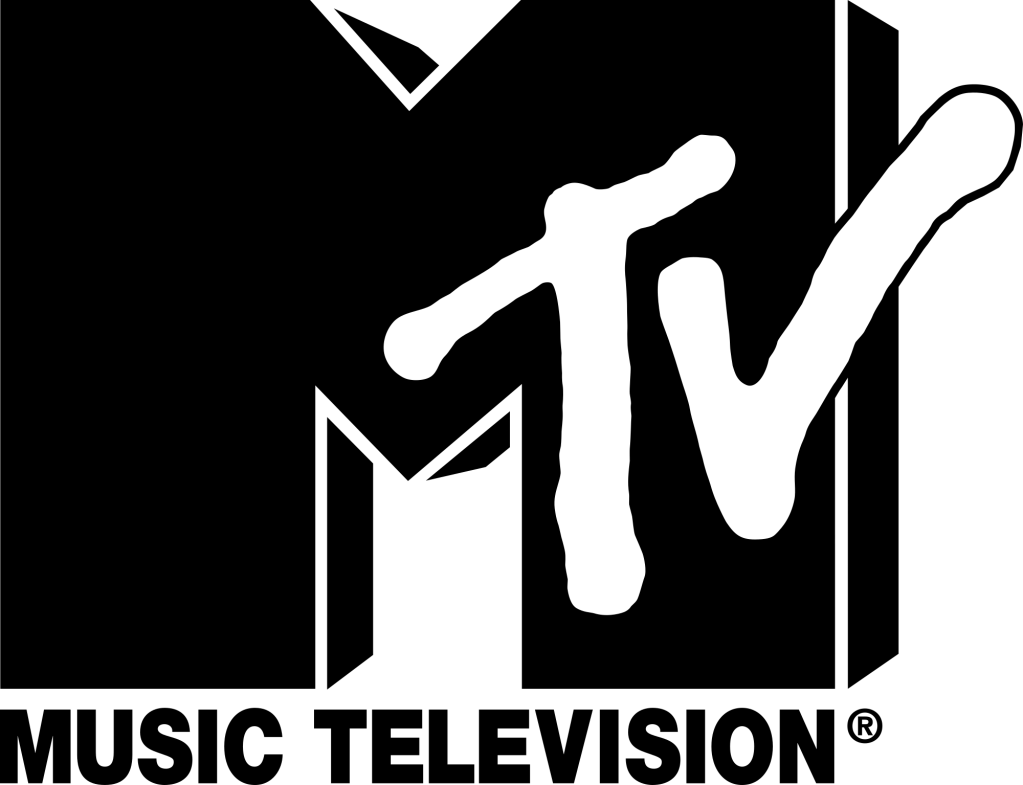
One variant looking like this.
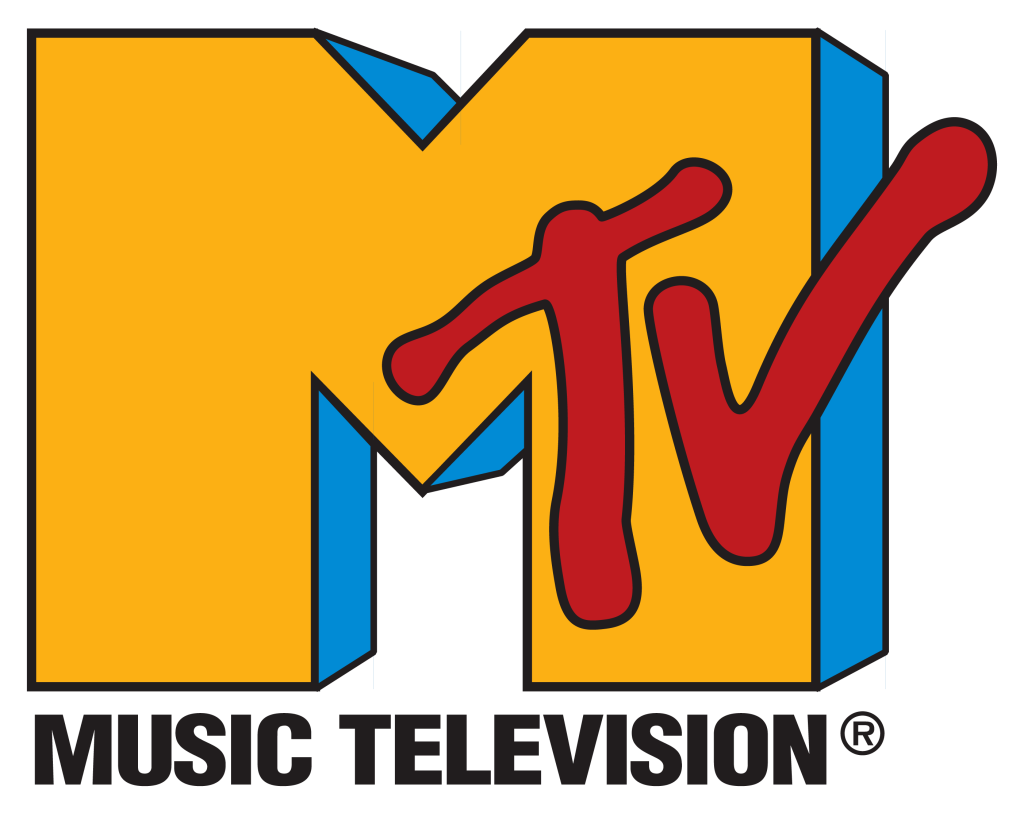
A whole lot more looking like these.
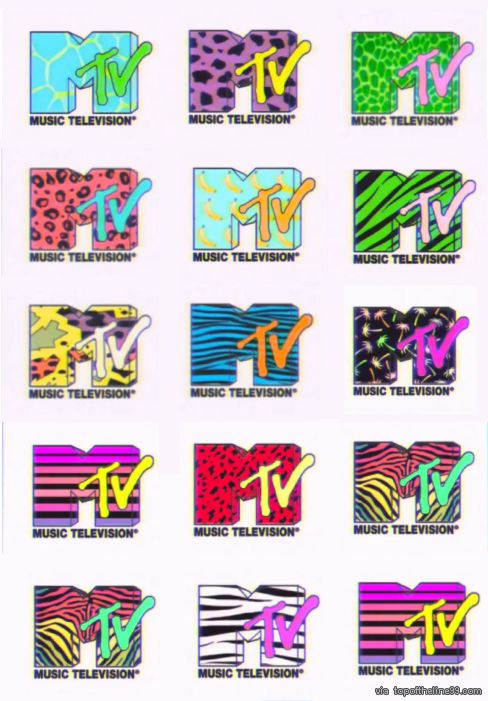
Very fitting how the first music video to play on the network was Video Killed the Radio Star by The Buggles. At first, MTV was made to host primarly rock and roll and album-oriented rock, eventually reaching to more pop, funk, new wave, and metal songs. Some of the earliest videos include one of my favorite songs, Once in a Lifetime by Talking Heads, Pat Benatar’s You Better Run, The Clash’s Should I Stay or Should I Go, Culture Club’s Karma Chameleon, and Phil Collins’ In the Air Tonight. Other artists including David Bowie and Cyndi Lauper too.
Now you think at this point, the rest was history right? Well there’s a few more things that got in the way and helped MTV skyrocket to more popularity, let’s start off with an infamous one, black artists not getting as much screentime as other artists. Starting in 1981 where the video for Rick James’ Super Freak was released, though it hasn’t aired once on the network, even though the video came out months before its launch. Reason is because the song didn’t fit with the AOR theme.
In an interview in 1983 with David Bowie and VJ Mark Goodman, Bowie made a stern address to the public saying that MTV doesn’t feature a lot of black music artists, Goodman denying of course. Bowie addresses the lack of black artists not being played throughout the day and only just in the early morning. “The only few black artists one does see are on in about 2:30 in the morning until 6:00.” Goodman’s response to this includes “It’s not like it was in ’67 where it was like “Yeah, I’m not into that, oh but you’re into that well” now it’s, “You’re into that? I don’t like you.” and that’s scary.” He’s telling Bowie that kids just don’t want to watch and listen to black music anymore. He also mentions how MTV was tryingo to eventually feature more black artists but are testing the waters. I’m sure you can see how furious Bowie is even if his face isn’t showing it completely. I guess you can say MTV was being very discriminate early on.
Later on that year, the barrier was broken, not just by brute force and higher ups finally realizing their mistakes, but by magic too. A little magic called Billie Jean.
We know about Billie Jean by Michael Jackson of course, the video that went along with it, and how popular it is, but here’s the kicker, MTV wasn’t ever going to put the video on. That is when CBS Records President at the time, Walter Yetnikoff, sent a stern message that would surely make them shake in their boots; either they air the video or all CBS Records songs will be pulled from MTV. Of course they reluctantly agreed to air the video which helped boost Billie Jean and Michael Jackson to more people.
There was the Grammys for just the songs made by artists, now what if there was a “Grammys for music videos”? On September 14, 1984, MTV held the first annual Video Music Awards in Radio City Music Hall in New York City. The show was what the title said, an awards show for the best music videos in several categories. Those included: Video of the Year, Song of the Year, Song of the Year, Best Pop, Best Hip-Hop, Best Choreography, Best Rock, and Best Cinematography. Now you remember when I mentioned MTV Networks? Well in 1985, Viacom purchased Waner-Amex Satellite, with MTV, Nickelodeon, and even VH1 under their belt now. Oh Viacom you evil giant on YouTube you. They rebranded MTV as MTV Networks, eventually creating more original programming themed to music like Club MTV, Remote Control, and The Week in Rock (which was also the start of MTV News). This is where the “they don’t play music videos anymore” part starts to trickle in.
That actually came in closer than you thought it would. Since the early to mid 1990s, rock and roll was becoming a bit out of the picture with more R&B, electric, and alternative rock being added; there was a significant drop in videos played, with a whole lot more original content being added that was meant for other networks. A lot of them weren’t even themed to music, but to a general adult audience. Like Beavis & Butthead, Daria, The Real World, Total Request Live, jackass, Pimp My Ride, and Punk’d. I’d say the videos didn’t die out completely until around 2008-2010 where the channel song was pretty much ending, rapidly, and yes I’d say the new logo is included in that too.

Now here we are, current MTV featuring Jersey Shore (and all the other shores), Ridiculousness, MTV Cribs, and Wild n’ Out, which I think might be the only other thing close to a music related show other than the VMA’s. I think there’s not a whole lot else to mention, this was just the general history of MTV with a vast, wide look at its creation process to its early years. Eventually the reality of having music being played 24/7 on your TV just seem to fade away with the oncoming storm that is the internet and streaming your favorite songs and music videos literally any time you want. Pretty much, YouTube, iTunes, Spotify, and Soudcloud are pretty much considered “MTV” now, moreso on YouTube since it has the music videos. I hope you enjoyed this little bit of MTV’s history, and yes there’s still a way to get the old MTV that people want, miss and love, and that is MTV Classic. Good luck hoping it would last a long time though, it’s the least watched sister channel and that’s a bit of a shame, I guess watch it while it lasts.
Would you, no, do you still want your MTV?
Sources:
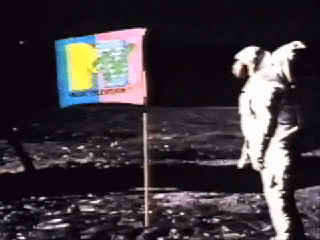
One thought on “Music on TV 24/7? Get Out of Town.”